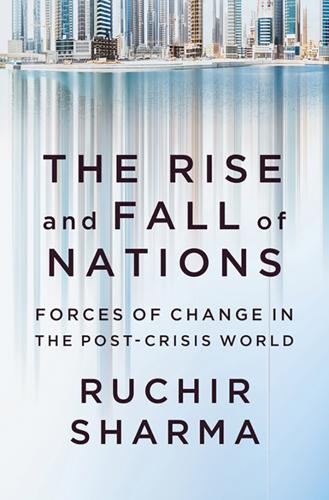
The Rise and Fall of Nations: Forces of Change in the Post-Crisis World
by
Ruchir Sharma
Published 5 Jun 2016
Despite the fact that South Korean billionaires control wealth of very limited scale relative to the size of the economy, and operate almost entirely outside the rent-seeking industries, the dominance of family fortunes in the billionaire class helps explain why in recent years inequality has surfaced as a political issue in Seoul. A similar political backlash is starting to percolate in Taiwan, where the scale of billionaire wealth is not only much higher than in South Korea, but family connections also play a strong role. Inherited wealth accounts for 44 percent of the billionaire fortunes, and half of the twenty-eight billionaires in Taiwan are related to at least one other person on the list. The Wei family alone has four members in the billionaire class. The perception that Taiwan’s formerly egalitarian society is developing an increasingly entrenched family elite has helped the opposition make inroads against the ruling KMT party by blaming it for rising inequality.
…
In this kind of changing environment, which can be detected only by observation and not in data, good billionaires can rise and help trigger a process of wealth creation that spreads its fruits more broadly. The billionaire class is a useful bellwether for the economy as a whole. As the number of billionaires rises, the data are getting more significant over time, as a statistical sample and an analytical tool for spotting countries where the balance of wealth is skewing too sharply to the super rich. Measuring changes in the scale, rate of turnover, and sources of billionaire wealth can help to provide some insight into whether an economy is creating the kind of productive wealth that will help it grow in the future. It’s a bad sign if the billionaire class owns a bloated share of the economy, becomes an entrenched and inbred elite, and produces its wealth mainly from politically connected industries.
…
Chile had only twelve billionaires in 2015, but they controlled fortunes worth 15 percent of the economy—one of the highest shares in the world. In that light, the eruption of self-defeating battles over inequality even in a former bastion of moderation like Chile should have been less surprising. Reading the Billionaire Lists Billionaire watching is exploding as an industry, alongside the growing billionaire class. Forbes has published its annual World Billionaires List since the 1980s. The number of billionaires has doubled in the last five years and tripled in the last ten, making this list a large and increasingly relevant sample. Nations such as China and Russia, which had no billionaires two decades ago, now have a significant class of the ultrawealthy.

The Populist Explosion: How the Great Recession Transformed American and European Politics
by
John B. Judis
Published 11 Sep 2016
That could lead to a defeat that will cast a temporary pall on the substance of his populism. Trump’s longer-term influence may also be limited by his having been, like Long, Wallace, and Perot, the singularly charismatic messenger for his populism. But his candidacy will have produced another crack in the neoliberal firmament. Sanders and the Billionaire Class Sanders, like Trump, was raised in one of New York’s outer boroughs, but the resemblance ends there. Sanders grew up in Brooklyn in humble circumstances. His father was a Jewish émigré from Poland who sold paint and his mother the daughter of émigrés. He went to the same high school that Ruth Bader Ginsburg and Chuck Schumer attended, and he spent a year at Brooklyn College before transferring to the University of Chicago, where he graduated in 1964.
…
In an interview with Rachel Maddow on MSNBC that month, Sanders, noting “this strange moment in American history, when our middle class is disappearing, when we have so many people living in poverty, when we have to deal with climate change, when we have to deal with the horrendous level of income and wealth inequality,” asked [H]ow do we address these issues in a way that takes on the billionaire class. Where they have significant control over the media, where they by and large determine the legislation that goes on in Congress, and as a result of Citizens United are prepared to buy the United States Congress.” As his campaign unfolded, Sanders unveiled a set of radical reforms that would, among other things, entail government reassuming control over the private market.
…
Sanders’s critics among Democrats argued that his proposals were impractical because they would never get through a Republican congress. A column in New York magazine was entitled, “What Bernie Sanders Doesn’t Understand About American Politics.” Sanders responded that to obtain any of these reforms, there would have to be a “political revolution” that pitted the power of the people against the billionaire class. “If we are going to transform America,” Sanders said during a speech in North Las Vegas in November, “We need a political revolution. Millions of people have to stand up and get involved in the political process in a way we have not in many, many years.” In an editorial, The New York Times criticized Sanders’s “facile calls for revolution,” but what Sanders meant by “revolution” was greater active participation in politics rather than armed struggle to seize state power.

Billionaire, Nerd, Savior, King: Bill Gates and His Quest to Shape Our World
by
Anupreeta Das
Published 12 Aug 2024
Similarly, Walker found, when you lump people into a class, such as a billionaire class, people are more likely to believe that there is something wrong with the system that allows so much wealth accumulation for a few.3 Their study concluded that people are unlikely to support high inheritance or wealth taxes if they’re thinking of an individual billionaire’s success, but they are much more likely to support higher taxes on the same for the wealthy as a group. That, Walker said, is an important policy takeaway for any politician advocating for higher taxes.4 People’s growing distrust of the billionaire class comes from two interrelated occurrences: Not only has their wealth ballooned in the past decade, but it has increased at a rate well beyond what seems fair or equitable to many, especially on the left.
…
The dollars these people drop into a collection plate or give to United Way mean forgone movies, dinners out, or other personal pleasures. In contrast, my family and I will give up nothing we need or want by fulfilling this 99% pledge.”16 Small-dollar donations are mostly a reflection of pure generosity by individuals. It’s therefore not surprising that philanthropy by the billionaire class is also seen as unadulterated generosity, except that it is supercharged. In 2022, very large gifts by individuals represented 5 percent of the nearly $500 billion that Americans gave to charity, according to the annual Giving USA report, and “mega-giving” by six individuals and couples alone totaled $14 billion.17 Another study found that donations of more than $1 million accounted for 11 percent of the total number of donations, but measured by the number of dollars, they constituted 40 percent.
…
11 In the summer of 2010, Gates and Buffett went one step further, inviting other billionaires to commit publicly to giving away at least half of their wealth to charitable causes during their lifetimes or in their wills. The highly publicized pressure campaign, called the Giving Pledge, was meant to get the billionaire class thinking more deeply about philanthropy. The idea had come about after a small group dinner for about seven couples in 2009 hosted by David Rockefeller.12 As they went around the table, each guest or couple talked about their philosophy of giving. Many in the group knew each other only glancingly, but they took comfort in their shared status and spoke in a spirit of candor, sharing stories about their families, how their parents had influenced their attitude toward charity, and the problem of how much to leave their heirs.

Corbyn
by
Richard Seymour
Podemos, despite having led in the polls, was ultimately unable to secure an election victory. Syriza, having won, was unable to change policy despite forming a government. Sanders may yet win, but is already warning his supporters that even as president the scale of resistance he would face from ‘the billionaire class’ could make it all but impossible for him to implement his goals. Corbyn, of course, is some way from being in a position to tangle with ‘the billionaire class’. He has first to face down the bile of his own parliamentary colleagues such as David Blunkett, Tristram Hunt, Simon Danczuk, Sadiq Khan, Caroline Flint, John Mann, Michael Dugher and Ben Bradshaw. He also has to keep a shadow cabinet together against a steady drumbeat of more subtly undermining behaviour on the part of Hilary Benn, Maria Eagle and deputy leader Tom Watson.
…
It offered a tempting thrill of success to those who had been so brutally defeated, even if the condition of that success was pre-emptive surrender on all essential questions. And for some time, at least, the Blairites had everything their way. Through good report and ill; through privatisation, war, and growing inequality; through the tumescence of a billionaire class, the NHS crisis caused by usurious Private Finance Initiatives, and the bankers’ pillage, there was barely a simmering reflex of revolt in the Labour Party. The new management ruled with a striking brittleness, defensiveness and paranoia, acting on the basis of a sort of organised distrust of the membership.

Survival of the Richest: Escape Fantasies of the Tech Billionaires
by
Douglas Rushkoff
Published 7 Sep 2022
A company called Vivos is selling luxury underground apartments in converted Cold War munitions storage facilities, missile silos, and other fortified locations around the world. Like miniature Club Med resorts, they offer private suites for individuals or families, and larger common areas with pools, games, movies, and dining. Ultra-elite shelters like the Oppidum in the Czech Republic claim to cater to the billionaire class, and pay more attention to the long-term psychological health of residents. They provide imitation of natural light, such as a pool with a simulated sunlit garden area, a wine vault, and other amenities to make the wealthy feel at home. On closer analysis, however, the probability of a fortified bunker actually protecting its occupants from the reality of, well, reality, is very slim.
…
They are helping formulate a picture of the world that gives cover to those who would exploit other human beings: people aren’t really alive or aware—they’re just behaving in service to their genetic programs. They are primates subject to biases and blind spots. It’s a sociopathic perspective that makes science valuable to the billionaire class because it helps justify their most shameful behaviors—from trafficking young women to exploiting an entire underclass of workers and consumers. These fans of science are perpetuating an unacknowledged value system inherited from the forefathers of the scientistic tradition; it fully informs their actions and assumptions, even though they believe themselves to be nothing but evidence-based rationalists.

The Age of Illusions: How America Squandered Its Cold War Victory
by
Andrew J. Bacevich
Published 7 Jan 2020
The media, therefore, greeted his candidacy as somewhere between quixotic and something of a lark. In prefacing its report on his intention to run, the Washington Post described Sanders as “an ex-hippie, septuagenarian socialist from the liberal reaches of Vermont who rails, in his thick Brooklyn accent, rumpled suit and frizzy pile of white hair, against the ‘billionaire class’ taking over the country.”3 In case you missed the point, as far as the Post was concerned, Sanders did not qualify as presidential timber. Keep in mind that, even before Hillary Clinton had formally announced her candidacy, the nation’s sharpest political minds had already anointed the former First Lady, senator, and secretary of state as the Democratic nominee for president in 2016.
…
GovTrack, “2016 Report Card: All Senators,” https://www.govtrack.us/congress/members/report-cards/2016/senate/ideology, accessed July 17, 2018. 2. Edward-Isaac Dovere, “Sanders Had Big Ideas but Little Impact on Capitol Hill,” Politico (March 12, 2016). 3. Paul Kane and Philip Rucker, “An Unlikely Contender, Sanders Takes on ‘Billionaire Class’ in 2016 Bid,” Washington Post (April 30, 2015). 4. “Democratic Party presidential primaries, 2016,” Wikipedia, accessed July 22, 2018. 5. Michael D. Shear and Matthew Rosenberg, “Released Emails Suggest the D.N.C. Derided the Sanders Campaign,” New York Times (July 22, 2016). 6. Quoted in Raymond Lonergan, “A Steadfast Friend of Labor,” in Irving Dillard, ed., Mr.
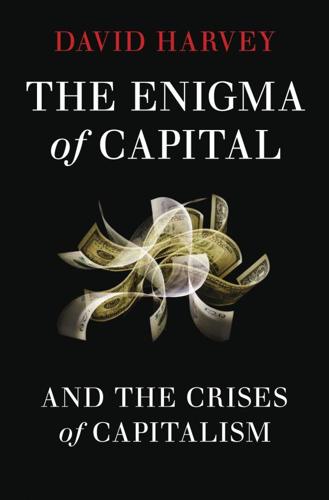
The Enigma of Capital: And the Crises of Capitalism
by
David Harvey
Published 1 Jan 2010
Given the wage repression that has occurred worldwide (though unevenly), the capitalist class in general has had an expanding stream of revenues at its command and the demand for luxury goods has plainly grown to a corresponding degree (go to any marina in Florida or around the Mediterranean, look at the yachts and cruise boats moored there, then contrast this with what you would have seen in 1970 and you will get the point). But for all of the conspicuousness of its consumption habits, there is still a physical limit to the number of yachts, MacMansions or pairs of shoes that the billionaire class can consume. Capitalist personal consumption, it turns out, is a very weak source of effective demand. The more that the centralisation of capital concentrates wealth in the hands of a very small group in the population (such as the 300 or so families that the UN development report of 1996 showed controlled 40 per cent of the world’s wealth) the less effective is their consumption in bolstering demand.
…
Index Numbers in italics indicate Figures; those in bold indicate a Table. 11 September 2001 attacks 38, 41–2 subject to perpetual renewal and transformation 128 A Abu Dhabi 222 Académie Française 91 accumulation by dispossession 48–9, 244 acid deposition 75, 187 activity spheres 121–4, 128, 130 deindustrialised working-class area 151 and ‘green revolution’ 185–6 institutional and administrative arrangements 123 ‘mental conceptions of the world’ 123 patterns of relations between 196 production and labour processes 123 relations to nature 123 the reproduction of daily life and of the species 123 slums 152 social relations 123 subject to perpetual renewal and transformation 128 suburbs 150 technologies and organisational forms 123 uneven development between and among them 128–9 Adelphia 100 advertising industry 106 affective bonds 194 Afghanistan: US interventionism 210 Africa civil wars 148 land bought up in 220 neocolonialism 208 population growth 146 agribusiness 50 agriculture collectivisation of 250 diminishing returns in 72 ‘green revolution’ 185–6 ‘high farming’ 82 itinerant labourers 147 subsidies 79 AIG 5 alcoholism 151 Allen, Paul 98 Allende, Salvador 203 Amazonia 161, 188 American Bankers Association 8 American Revolution 61 anarchists 253, 254 anti-capitalist revolutionary movement 228 anti-racism 258 anti-Semitism 62 après moi le déluge 64, 71 Argentina Debt Crisis (2000–2002) 6, 243, 246, 261 Arizona, foreclosure wave in 1 Arrighi, Giovanni: The Long Twentieth Century 35, 204 asbestos 74 Asia Asian Currency Crisis (1997–98) 141, 261 collapse of export markets 141 growth 218 population growth 146 asset stripping 49, 50, 245 asset traders 40 asset values 1, 6, 21, 23, 26, 29, 46, 223, 261 Association of South East Asian Nations (ASEAN) 200 Athabaska tar sands, Canada 83 austerity programmes 246, 251 automobile industry 14, 15, 23, 56, 67, 68, 77, 121, 160–61 Detroit 5, 15, 16, 91, 108, 195, 216 autonomista movement 233, 234, 254 B Baader-Meinhof Gang 254 Bakunin, Michael 225 Balzac, Honoré 156 Bangalore, software development in 195 Bangkok 243 Bank of England 53, 54 massive liquidity injections in stock markets 261 Bank of International Settlements, Basel 51, 55, 200 Bank of New England 261 Bankers Trust 25 banking bail-outs 5, 218 bank shares become almost worthless 5 bankers’ pay and bonuses 12, 56, 218 ‘boutique investment banks’ 12 de-leveraging 30 debt-deposit ratio 30 deposit banks 20 French banks nationalised 198 international networks of finance houses 163 investment banks 2, 19, 20, 28, 219 irresponsible behaviour 10–11 lending 51 liquidity injections by central banks vii, 261 mysterious workings of central banks 54 ‘national bail-out’ 30–31 property market-led Nordic and Japanese bank crises 261 regional European banks 4 regular banks stash away cash 12, 220 rising tide of ‘moral hazard’ in international bank lending practices 19 ‘shadow banking’ system 8, 21, 24 sympathy with ‘Bonnie and Clyde’ bank robbers 56 Baran, Paul and Sweezey, Paul: Monopoly Capital 52, 113 Barings Bank 37, 100, 190 Baucus, Max 220 Bavaria, automotive engineering in 195 Beijing declaration (1995) 258 Berlin: cross-border leasing 14 Bernanke, Ben 236 ‘Big Bang’ (1986) 20, 37 Big Bang unification of global stock, options and currency trading markets 262 billionaire class 29, 110, 223 biodiversity 74, 251 biomass 78 biomedical engineering 98 biopiracy 245, 251 Birmingham 27 Bismarck, Prince Otto von 168 Black, Fischer 100 Blackstone 50 Blair, Tony 255 Blair government 197 blockbusting neighbourhoods 248 Bloomberg, Mayor Michael 20, 98, 174 Bolivarian movement 226, 256 bonuses, Wall Street 2, 12 Borlaug, Norman 186 bourgeoisie 48, 89, 95, 167, 176 ‘boutique investment banks’ 12 Brazil automobile industry 16 capital flight crisis (1999) 261 containerisation 16 an export-dominated economy 6 follows Japanese model 92 landless movement 257 lending to 19 the right to the city movement 257 workers’ party 256 Bretton Woods Agreement (1944) 31, 32, 51, 55, 171 British Academy 235 British empire 14 Brown, Gordon 27, 45 Budd, Alan 15 Buenos Aires 243 Buffett, Warren 173 building booms 173–4 Bush, George W. 5, 42, 45 business associations 195 C California, foreclosure wave in 1, 2 Canada, tightly regulated banks in 141 ‘cap and trade’ markets in pollution rights 221 capital bank 30 centralisation of 95, 110, 113 circulation of 90, 93, 108, 114, 116, 122, 124, 128, 158, 159, 182, 183, 191 cultural 21 devalued 46 embedded in the land 191 expansion of 58, 67, 68 exploitations of 102 export 19, 158 fixed 191, 213 industrial 40–41, 56 insufficient initial money capital 47 investment 93, 203 and labour 56, 88, 169–70 liquid money 20 mobility 59, 63, 64, 161–2, 191, 213 and nature 88 as a process 40 reproduction of 58 scarcity 50 surplus 16, 28, 29, 50–51, 84, 88, 100, 158, 166, 167, 172, 173, 174, 206, 215, 216, 217 capital accumulation 107, 108, 123, 182, 183, 191, 211 and the activity spheres 128 barriers to 12, 16, 47, 65–6, 69–70, 159 compound rate 28, 74, 75, 97, 126, 135, 215 continuity of endless 74 at the core of human evolutionary dynamics 121 dynamics of 188, 197 geographic landscape of 185 geographical dynamics of 67, 143 and governance 201 lagging 130 laws of 113, 154, 160 main centres of 192 market-based 180 Mumbai redevelopment 178 ‘nature’ affected by 122 and population growth 144–7 and social struggles 105 start of 159 capital circulation barriers to 45 continuity of 68 industrial/production capital 40–41 inherently risky 52 interruption in the process 41–2, 50 spatial movement 42 speculative 52, 53 capital controls 198 capital flow continuity 41, 47, 67, 117 defined vi global 20 importance of understanding vi, vii-viii interrupted, slowed down or suspended vi systematic misallocation of 70 taxation of vi wealth creation vi capital gains 112 capital strike 60 capital surplus absorption 31–2, 94, 97, 98, 101, 163 capital-labour relation 77 capitalism and communism 224–5 corporate 1691 ‘creative-destructive’ tendencies in 46 crisis of vi, 40, 42, 117, 130 end of 72 evolution of 117, 118, 120 expansion at a compound rate 45 first contradiction of 77 geographical development of 143 geographical mobility 161 global 36, 110 historical geography of 76, 117, 118, 121, 174, 180, 200, 202, 204 industrial 58, 109, 242 internal contradictions 115 irrationality of 11, 215, 246 market-led 203 positive and negative aspects 120 and poverty 72 relies on the beneficence of nature 71 removal of 260 rise of 135, 192, 194, 204, 228, 248–9, 258 ‘second contradiction of’ 77, 78 social relations in 101 and socialism 224 speculative 160 survival of 46, 57, 66, 86, 107, 112, 113, 116, 130, 144, 229, 246 uneven geographical development of 211, 213 volatile 145 Capitalism, Nature, Socialism journal 77 capitalist creed 103 capitalist development considered over time 121–4 ‘eras’ of 97 capitalist exploitation 104 capitalist logic 205 capitalist reinvestment 110–11 capitalists, types of 40 Carnegie, Andrew 98 Carnegie foundation 44 Carnegie Mellon University, Pittsburgh, Pennsylvania 195 Carson, Rachel: Silent Spring 187 Case Shiller Composite Indices SA 3 Catholic Church 194, 254 cell phones 131, 150, 152 Central American Free Trade Association (CAFTA) 200 centralisation 10, 11, 165, 201 Certificates of Deposit 262 chambers of commerce 195, 203 Channel Tunnel 50 Chiapas, Mexico 207, 226 Chicago Board Options Exchange 262 Chicago Currency Futures Market 262 ‘Chicago School’ 246 Chile, lending to 19 China ‘barefoot doctors’ 137 bilateral trade with Latin America 173 capital accumulation issue 70 cheap retail goods 64 collapse of communism 16 collapse of export markets 141 Cultural Revolution 137 Deng’s announcement 159 falling exports 6 follows Japanese model 92 ‘Great Leap Forward’ 137, 138 growth 35, 59, 137, 144–5, 213, 218, 222 health care 137 huge foreign exchange reserves 141, 206 infant mortality 59 infrastructural investment 222 labour income and household consumption (1980–2005) 14 market closed after communists took power (1949) 108 market forcibly opened 108 and oil market 83 one child per family policy 137, 146 one-party rule 199 opening-up of 58 plundering of wealth from 109, 113 proletarianisation 60 protests in 38 and rare earth metals 188 recession (1997) 172 ‘silk road’ 163 trading networks 163 unemployment 6 unrest in 66 urbanisation 172–3 and US consumerism 109 Chinese Central Bank 4, 173 Chinese Communist Party 180, 200, 256 chlorofluoral carbons (CFCs) 74, 76, 187 chronometer 91, 156 Church, the 249 CIA (Central Intelligence Agency) 169 circular and cumulative causation 196 Citibank 19 City Bank 261 city centres, Disneyfication of 131 City of London 20, 35, 45, 162, 219 class consciousness 232, 242, 244 class inequalities 240–41 class organisation 62 class politics 62 class power 10, 11, 12, 61, 130, 180 class relations, radical reconstitution of 98 class struggle 56, 63, 65, 96, 102, 127, 134, 193, 242, 258 Clausewitz, Carl von 213 Cleveland, foreclosure crisis in 2 Cleveland, foreclosures on housing in 1 Clinton, Bill 11, 12, 17, 44, 45 co-evolution 132, 136, 138, 168, 185, 186, 195, 197, 228, 232 in three cases 149–53 coal reserves 79, 188 coercive laws of competition see under competition Cold War 31, 34, 92 Collateralised Bond Obligations (CBOs) 262 Collateralised Debt Obligations (CDOs) 36, 142, 261, 262 Collateralised Mortgage Obligations (CMOs) 262 colonialism 212 communications, innovations in 42, 93 communism 228, 233, 242, 249 collapse of 16, 58, 63 compared with socialism 224 as a loaded term 259–60 orthodox communists 253 revolutionary 136 traditional institutionalised 259 companies joint stock 49 limited 49 comparative advantage 92 competition 15, 26, 43, 70 between financial centres 20 coercive laws of 43, 71, 90, 95, 158, 159, 161 and expansion of production 113 and falling prices 29, 116 fostering 52 global economic 92, 131 and innovation 90, 91 inter-capitalist 31 inter-state 209, 256 internalised 210 interterritorial 202 spatial 164 and the workforce 61 competitive advantage 109 computerised trading 262 computers 41, 99, 158–9 consortia 50, 220 consumerism 95, 109, 168, 175, 240 consumerist excess 176 credit-fuelled 118 niche 131 suburban 171 containerisation 16 Continental Illinois Bank 261 cooperatives 234, 242 corporate fraud 245 corruption 43, 69 cotton industry 67, 144, 162 credit cards fees vii, 245 rise of the industry 17 credit crunch 140 Credit Default swaps 262 Crédit Immobilièr 54 Crédit Mobilier 54 Crédit Mobilier and Immobilier 168 credit swaps 21 credit system and austerity programmes 246 crisis within 52 and the current crisis 118 and effective demand problem 112 an inadequate configuration of 52 predatory practices 245 role of 115 social and economic power in 115 crises crises of disproportionality 70 crisis of underconsumption 107, 111 east Asia (1997–8) 6, 8, 35, 49, 246 financial crisis of 1997–8 198, 206 financial crisis of 2008 34, 108, 114, 115 general 45–6 inevitable 71 language of crisis 27 legitimation 217 necessary 71 property market 8 role of 246–7 savings and loan crisis (US, 1984–92) 8 short sharp 8, 10 south-east Asia (1997–8) 6, 8, 35, 49, 246 cross-border leasing 142–3 cultural choice 238 ‘cultural industries’ 21 cultural preferences 73–4 Cultural Revolution 137 currency currency swaps 262 futures market 24, 32 global 32–3, 34 options markets on 262 customs barriers 42, 43 cyberspace 190 D Darwin, Charles 120 DDT 74, 187 de-leveraging 30 debt-financing 17, 131, 141, 169 decentralisation 165, 201 decolonisation 31, 208, 212 deficit financing 35, 111 deforestation 74, 143 deindustrialisation 33, 43, 88, 131, 150, 157, 243 Deleuze, Gilles 128 demand consumer 107, 109 effective 107, 110–14, 116, 118, 221, 222 lack of 47 worker 108 Democratic Party (US) 11 Deng Xiaoping 159 deregulation 11, 16, 54, 131 derivatives 8 currency 21 heavy losses in (US) 261 derivatives markets creation of 29, 85 unregulated 99, 100, 219 Descartes, René 156 desertification 74 Detroit auto industry 5, 15, 16, 91, 108, 195, 216 foreclosures on housing in 1 Deutsches Bank 20 devaluation 32, 47, 116 of bank capital 30 of prior investments 93 developing countries: transformation of daily lives 94–5 Developing Countries Debt Crisis 19, 261 development path building alliances 230 common objectives 230–31 development not the same as growth 229–30 impacts and feedbacks from other spaces in the global economy 230 Diamond, Jared: Guns, Germs and Steel 132–3, 154 diasporas 147, 155, 163 Dickens, Charles: Bleak House 90 disease 75, 85 dispossession anti-communist insurgent movements against 250–51 of arbitrary feudal institutions 249 of the capital class 260 China 179–80 first category 242–4 India 178–9, 180 movements against 247–52 second category 242, 244–5 Seoul 179 types of 247 under socialism and communism 250 Domar, Evsey 71 Dongguan, China 36 dot-com bubble 29, 261 Dow 35,000 prediction 21 drug trade 45, 49 Dubai: over-investment 10 Dubai World 174, 222 Durban conference on anti-racism (2009) 258 E ‘earth days’ 72, 171 east Asia crash of 1997–8 6, 8, 35, 49, 246 labour reserves 64 movement of production to 43 proletarianisation 62 state-centric economies 226 wage rates 62 eastern European countries 37 eBay 190 economic crisis (1848) 167 economists, and the current financial crisis 235–6 ecosystems 74, 75, 76 Ecuador, and remittances 38 education 59, 63, 127, 128, 221, 224, 257 electronics industry 68 Elizabeth II, Queen vi-vii, 235, 236, 238–9 employment casual part-time low-paid female 150 chronic job insecurity 93 culture of the workplace 104 deskilling 93 reskilling 93 services 149 Engels, Friedrich 89, 98, 115, 157, 237 The Housing Question 176–7, 178 Enron 8, 24, 52, 53, 100, 261 entertainment industries 41 environment: modified by human action 84–5 environmental movement 78 environmental sciences 186–7 equipment 58, 66–7 equity futures 262 equity index swaps 262 equity values 262 ethanol plants 80 ethnic cleansings 247 ethnicity issues 104 Eurodollars 262 Europe negative population growth in western Europe 146 reconstruction of economy after Second World War 202 rsouevolutions of 1848 243 European Union 200, 226 eastern European countries 37 elections (June 2009) 143 unemployment 140 evolution punctuated equilibrium theory of natural evolution 130 social 133 theory of 120, 129 exchange rates 24, 32, 198 exports, falling 141 external economies 162 F Factory Act (1848) 127 factory inspectors 127 ‘failed states’ 69 Fannie Mae (US government-chartered mortgage institution) 4, 17, 173, 223 fascism 169, 203, 233 Federal Deposit Insurance Corporation (FDIC) 8 rescue of Continental Illinois Bank 261 Federal Reserve System (the Fed) 2, 17, 54, 116, 219, 236, 248 and asset values 6 cuts interest rates 5, 261 massive liquidity injections in stock markets 261 rescue of Continental Illinois Bank 261 feminists, and colonisation of urban neighbourhoods 248 fertilisers 186 feudalism 135, 138, 228 finance capitalists 40 financial institutions awash with credit 17 bankruptcies 261 control of supply and demand for housing 17 nationalisations 261 financial services 99 Financial Times 12 financialisation 30, 35, 98, 245 Finland: Nordic cris (1992) 8 Flint strike, Michigan (1936–7) 243 Florida, foreclosure wave in 1, 2 Forbes magazine 29, 223 Ford, Henry 64, 98, 160, 161, 188, 189 Ford foundation 44, 186 Fordism 136 Fordlandia 188, 189 foreclosed businesses 245 foreclosed properties 220 fossil fuels 78 Foucault, Michel 134 Fourierists 168 France acceptance of state interventions 200 financial crisis (1868) 168 French banks nationalised 198 immigration 14 Paris Commune 168 pro-natal policies 59 strikes in 38 train network 28 Franco-Prussian War (1870) 168 fraud 43, 49 Freddie Mac (US government-chartered mortgage institution) 4, 17, 173, 223 free trade 10, 33, 90, 131 agreements 42 French Communist Party 52 French Revolution 61 Friedman, Thomas L.: The World is Flat 132 futures, energy 24 futures markets 21 Certificates of Deposit 262 currency 24 Eurodollars 262 Treasury instruments 262 G G7/G8/G20 51, 200 Galileo Galilei 89 Gates, Bill 98, 173, 221 Gates foundation 44 gays, and colonisation of urban neighbourhoods 247, 248 GDP growth (1950–2030) 27 Gehry, Frank 203 Geithner, Tim 11 gender issues 104, 151 General Motors 5 General Motors Acceptance Corporation 23 genetic engineering 84, 98 genetic modification 186 genetically modified organisms (GMOs) 186 gentrification 131, 256, 257 geographical determinism 210 geopolitics 209, 210, 213, 256 Germany acceptance of state interventions 199–200 cross-border leasing 142–3 an export-dominated economy 6 falling exports 141 invasion of US auto market 15 Nazi expansionism 209 neoliberal orthodoxies 141 Turkish immigrants 14 Weimar inflation 141 Glass-Steagall act (1933) 20 Global Crossing 100 global warming 73, 77, 121, 122, 187 globalisation 157 Glyn, Andrew et al: ‘British Capitalism, Workers and the Profits Squeeze’ 65 Goethe, Johann Wolfgang von 156 gold reserves 108, 112, 116 Goldman Sachs 5, 11, 20, 163, 173, 219 Google Earth 156 Gould, Stephen Jay 98, 130 governance 151, 197, 198, 199, 201, 208, 220 governmentality 134 GPS systems 156 Gramsci, Antonio 257 Grandin, Greg: Fordlandia 188, 189 grassroots organisations (GROS) 254 Great Depression (1920s) 46, 170 ‘Great Leap Forward’ 137, 138, 250 ‘Great Society’ anti-poverty programmes 32 Greater London Council 197 Greece sovereign debt 222 student unrest in 38 ‘green communes’ 130 Green Party (Germany) 256 ‘green revolution’ 185–6 Greenspan, Alan 44 Greider, William: Secrets of the Temple 54 growth balanced 71 compound 27, 28, 48, 50, 54, 70, 75, 78, 86 economic 70–71, 83, 138 negative 6 stop in 45 Guggenheim Museu, Bilbao 203 Gulf States collapse of oil-revenue based building boom 38 oil production 6 surplus petrodollars 19, 28 Gulf wars 210 gun trade 44 H habitat loss 74, 251 Haiti, and remittances 38 Hanseatic League 163 Harrison, John 91 Harrod, Roy 70–71 Harvey, David: A Brief History of Neoliberalism 130 Harvey, William vii Haushofer, Karl 209 Haussmann, Baron 49, 167–8, 169, 171, 176 Hawken, Paul: Blessed Unrest 133 Hayek, Friedrich 233 health care 28–9, 59, 63, 220, 221, 224 reneging on obligations 49 Health Care Bill 220 hedge funds 8, 21, 49, 261 managers 44 hedging 24, 36 Hegel, Georg Wilhelm Friedrich 133 hegemony 35–6, 212, 213, 216 Heidegger, Martin 234 Helú, Carlos Slim 29 heterogeneity 214 Hitler, Adolf 141 HIV/AIDS pandemic 1 Holloway, John: Change the World without Taking Power 133 homogeneity 214 Hong Kong excessive urban development 8 rise of (1970s) 35 sweatshops 16 horizontal networking 254 household debt 17 housing 146–7, 149, 150, 221, 224 asset value crisis 1, 174 foreclosure crises 1–2, 166 mortgage finance 170 values 1–2 HSBC 20, 163 Hubbert, M.
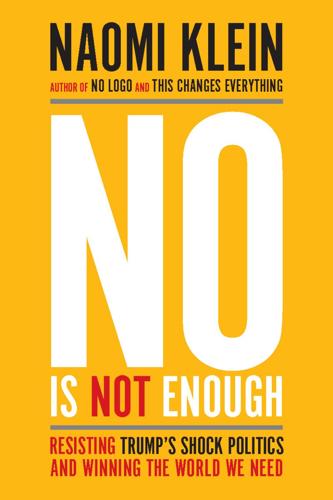
No Is Not Enough: Resisting Trump’s Shock Politics and Winning the World We Need
by
Naomi Klein
Published 12 Jun 2017
Which is why, even if this nightmarish presidency were to end tomorrow, the political conditions that produced it, and which are producing replicas around the world, will remain to be confronted. With US vice president Mike Pence or House speaker Paul Ryan waiting in the wings, and a Democratic Party establishment also enmeshed with the billionaire class, the world we need won’t be won just by replacing the current occupant of the Oval Office. About that word we: as you read, you may notice that I sometimes say we about the United States and sometimes about Canada. One reason for that is pretty simple. I am a citizen of both countries, with deep ties and relationships on both sides of the border.
…
It would be reassuring if we could pin this billionaire-as-savior complex on Trump’s Twitter-addled brain, or on his advisers at the Heritage Foundation, with their Ayn Randian worship of “free enterprise” and men who build tall things. But the fact is, Trump and Kushner are not the first to imagine that their great wealth endows them with Marvel Comic-like superpowers, nor the first to be encouraged in their delusions. For two decades now, elite liberals have been looking to the billionaire class to solve the problems we used to address with collective action and a strong public sector—a phenomenon sometimes called “philanthrocapitalism.” Billionaire CEOs and celebrities—Bill Gates, Richard Branson, Michael Bloomberg, Mark Zuckerberg, Oprah, and always, for some reason, Bono—are treated less like normal people who are gifted in their fields and happen to be good at making a great deal of money, and more like demigods.

The Myth of Capitalism: Monopolies and the Death of Competition
by
Jonathan Tepper
Published 20 Nov 2018
It's rigged by big businesses who want to leave our country, fire our workers, and sell their products back into the United States with absolutely no consequences for them. It's rigged by bureaucrats who are trapping kids in failing schools.”1 Sanders argued during his campaign: “For the past 40 years, Wall Street and the billionaire class has rigged the rules to redistribute wealth and income to the wealthiest and most powerful people,” adding, “We must send a message to the billionaire class: You can't have it all.”2 Voters in the United States and the UK overwhelmingly perceive that capitalism is broken. In the United States, a poll by Marketplace and Edison Research found that an overwhelming majority of Americans, 71%, believe that the US economy is rigged.
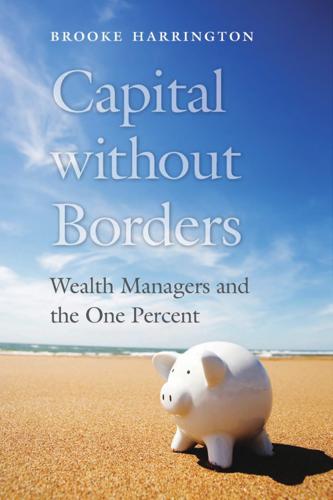
Capital Without Borders
by
Brooke Harrington
Published 11 Sep 2016
This chapter explores how those practices have evolved and manifested a century later, driven by the internationalization of wealth and the emergence of “hypermobile” capital.5 Just as the profession was transformed in the nineteenth century by the increasing fungibility of wealth, so, too, did wealth management metamorphose under the influence of globalization. As Mark explained: “In the late 1990s, a new breed of super-rich, the Forbes billionaire class, exploded in numbers and haven’t stopped growing. Who would have guessed in the 1980s that you could have an industry charging individuals for trust and estate services? And the reason is, those individuals have the wealth equivalent to small countries.” The timeline described by Mark and by several other participants in this study coincides roughly with the phenomenon that social scientists now term “financialization.”6 In particular, the combination of loosened currency controls and decreasing regulation of financial markets in the 1970s and 1980s led to an explosion of international commerce and of profits derived from investment.7 One result was the emergence of a new group of elites in need of wealth management services—people who, along with their fortunes, have become so mobile that they seem to exist between nation-states, rather than within the ordinary territorial boundaries that the law assumes.8 This new, “multiterritorial” client required a different kind of service, one focused not on making the most of legal and financial opportunities within a given state but on exploiting the conflicts and gaps between the laws of individual countries.9 This technique, known as “regulatory arbitrage,” is now part of a basic wealth management strategy for many clients.10 In keeping with these changes, wealth management firms have altered the way they present themselves to clients, shifting from a message of institutional stability—as shown in the Northern Trust advertisement in Chapter 2—to one of institutional nimbleness in the international arena.
…
See also bankers; financial (subprime mortgage) crisis of 2008; offshore finance Financial Action Task Force, 158 financial (subprime mortgage) crisis of 2008: conflict over tax avoidance after, 239; Goldman Sachs in, 63; inequality of subsequent recovery, 201, 211–13; interest in 1 percent renewed by, 195; wealth management in, 19; the wealthy as able to buy when everyone else was selling, 211, 214; world financial crisis nearly destroyed by, 295 financialization, 126, 253, 283, 287, 288 flee clauses, 175, 176, 177 Forbes magazine: Forbes billionaire class, 126; Forbes 400, 195–96, 201, 213–14; on Pritzker family, 13 foundations, 177–81; beneficiaries on managing council, 179; control as characteristic of, 151–52; corporations compared with, 180, 186–87; in defining bounds of family, 277; downsides of, 180–81; in economic inequality, 275; family, 151; in financial architecture created by wealth managers, 6, 271; in Latin America, 178; legal status as persons, 179; modifying to increase their appeal, 185; in Panama, 148, 149, 185; perpetual, 176, 179, 187; privacy and, 152, 153, 180; Roman law origins of, 178; salaries of officers of, 152; for tax avoidance, 150–53; tax risks for, 178, 180, 186; transaction costs of, 180; trusts compared with, 152, 178–80, 186–87.
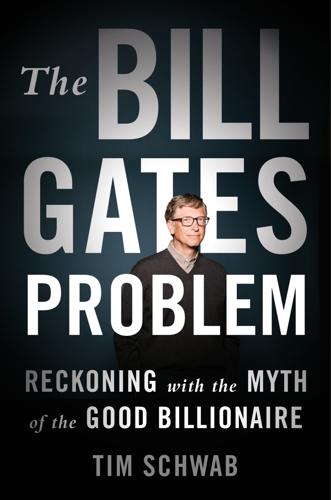
The Bill Gates Problem: Reckoning With the Myth of the Good Billionaire
by
Tim Schwab
Published 13 Nov 2023
They avoid taxes illegally and legally with trillions hiding offshore.… They lobby for public policies that don’t benefit the public interest—in fact, [they] cost the public interest but enrich them. They form monopolies that asphyxiate competition. They cause social problems to make a profit…,” Giridharadas noted, hammering on the serial misdeeds of the the billionaire class. “And they use philanthropy, some of the spoils of dubiously gotten wealth, to whitewash not just their reputations but to actually create the ability to keep doing what they are doing.… These are knowing acts of immorality.” Despite his oratorical talents and populist arguments, Giridharadas and his team lost the debate.
…
“The Gateses have given so far fifty billion dollars to endow that foundation, and there’s going to be more to come. You’re saying they’re immoral although they have undoubtedly already saved … several million lives, perhaps more than any other living person today.” Variations on this winning argument have long played counterpoint to any criticism of the billionaire class. As high-profile political figures in U.S. politics—from Representative Alexandria Ocasio-Cortez to Senators Elizabeth Warren and Bernie Sanders—challenge the very existence of billionaires, they do so with considerable vulnerability. Because what they’re arguing for is an end to the Gates Foundation and, by extension, the deaths of millions of children.
…
We have all kinds of rules and regulations governing the flow of money into politics that are designed to help us see through the professional-grade camouflage that special interests deploy to darken their money or minimize the visibility of their political influence. The Gateses’ ability to sidestep these rules speaks to the ways that extreme wealth is so destructive to democracy. The problem is bigger than the Gates family, as the billionaire class today readily engages in a seamless mix of philanthropy and political coercion to advance its ideas, interests, and ideologies. In 2022, Politico profiled how Google billionaire Eric Schmidt was using his private philanthropy, Schmidt Futures, to help fund and staff the U.S. Office of Science and Technology Policy—charitable giving that positioned him to influence how the government organized the nation’s spending on technology, potentially in ways that overlap with Google’s interests.

The Great Leveler: Violence and the History of Inequality From the Stone Age to the Twenty-First Century
by
Walter Scheidel
Published 17 Jan 2017
Within eighteen months of its publication in 2013, a 700-page academic tome on capitalist inequality had sold 1.5 million copies and risen to the top of the New York Times nonfiction hardcover bestseller list. In the Democratic Party primaries for the 2016 presidential election, Senator Bernie Sanders’s relentless denunciation of the “billionaire class” roused large crowds and elicited millions of small donations from grassroots supporters. Even the leadership of the People’s Republic of China has publicly acknowledged the issue by endorsing a report on how to “reform the system of income distribution.” Any lingering doubts are dispelled by Google, one of the great money-spinning disequalizers in the San Francisco Bay Area, where I live, which allows us to track the growing prominence of income inequality in the public consciousness (Fig.
…
Any lingering doubts are dispelled by Google, one of the great money-spinning disequalizers in the San Francisco Bay Area, where I live, which allows us to track the growing prominence of income inequality in the public consciousness (Fig. I.1).4 Figure I.1Top 1 percent income share in the United States (per year) and references to “income inequality” (three-year moving averages), 1970–2008 So have the rich simply kept getting richer? Not quite. For all the much-maligned rapacity of the “billionaire class” or, more broadly, the “1 percent,” American top income shares only very recently caught up with those reached back in 1929, and assets are less heavily concentrated now than they were then. In England on the eve of the First World War, the richest tenth of households held a staggering 92 percent of all private wealth, crowding out pretty much everybody else; today their share is a little more than half.
…
INDEX absolute inequality, 13, 434 Abdullah, Abdul Jabbar, 374 Abul-Magd, Adel Y., 267n13 Adams, Robert McC, 279n32 Akkadians, 56–57, 280 Albertus, Michael, 352n11, 354n13, 357, 359n22, 394n6 Alexander II, 348 Alexander the Great, 194 Alfani, Guido, 92n9, 98n17, 111n36, 306, 307n26, 308n27 Alien Landownership Act, 355 Alliance for Peace, 352 American Civil War, 7, 17, 109, 174–75, 176, 177, 204, 244, 264n8; black suffrage, 168; Confederacy, 175, 176; destruction of slavery, 361; material inequality, 179; mobilization, 181, 208; Union Army, 175, 176; wealth, 111 Amsterdam, 93–95, 300–1 Anand, Sudhir, 10n7 Angkor, 278 Antonine Plague, 326–30, 329n19, 333 Apiones family, 79 Argentina, 133–34, 144, 156, 380, 382–84, 386, 397 Argos, 252 Aristophanes, 251 Aristotle, 199n35 Ashur, 200 Ashurbanipal (king), 61 Assyrians, 60–61, 199–200, 270 Athens, 84–85, 192–98, 244, 251 Atkinson, Anthony, 12n9, 13n10, 15n12, 21n18, 107n30, 108n32, 138n4, 363n27, 434n12, 435, 436 Augsburg, 93, 201–2, 335–41 Australia, 133, 136, 142, 364, 405–6 Austria, 147, 406, 409, 428 Austro-Hungary, 141–42, 146, 151, 154, 349 Aztec period, 53, 54, 58–59, 82, 103, 103n25, 241, 315, 317, 319, 319n6 Babylonia, 48, 280, 334–35 Babylonian Theodicy, 59n47 Bagaudae, 245, 245n20 Barfield, Thomas J., 64n5 barter, 218 Baten, Jorg, 151n24 Battle of Britain, 170 Battle of Changping, 184 Battle of Mello, 247 Battle of Nördlingen, 339 Belgium, 154–55, 168, 246–47, 406 Bercé, Yves-Marie, 246n21, 250–51, 253 Bergh, Andreas, 162n41 Berkowitz, Edward, 170 Bertola, Luis, 110n35 Béthune, Maximilien de, 83 Beveridge, William, 171 Beveridge Report, 379 “billionaire class,” 3, 4 billionaires, 1, 2, 3, 4, 19n16; China, 2n3; Forbes World’s Billionaires, 71; Russia, 222 Bischoff, Kendra, 20n17 Black Death, 18, 90, 91n6, 93, 94, 96, 112, 291–313, 293n2, 333, 335, 341, 375, 390, 397, 442; Byzantine, 303; cultivation patterns, 329; eastern European countries, 311; elites, 310; end of Middle Ages, 111; England, 299, 342, 394n6; Europe, 297; famines, 331–32; “First,” 326; fourteenth century, 319; impact, 297; income, 101; initial wave, 332; Italy, 313; Justinianic Plague, 325; labor costs, 247, 302; labor supply, 248; late medieval Europe, 324, 336; late medieval pandemic 293–313; Lorenz curves, 308; Mamluk Egypt, 312; mid-fourteenth century, 314; mortality, 304, 307–8, 316; New World, 316; Ottoman, 303; population, 298; real wages, 4, 304; Tuscani, 308n28; western Europe, 318, 326, 330, 341; wheat wages, 324 “bloodlands,” 155 Blum, Jerome, 311 Boccaccio, Giovanni, 296 Boehm, Christopher, 26n1, 28n4, 29n6 Boix, Carles, 30n8, 85n36, 267n12 Bolivia, 243, 276–78, 382–84, 387 Bolsheviks, 215, 216, 223, 396 Borgerhoff Mulder, Monique, 37n20 Borsch, Stuart J., 312n33 Botswana, 371 Bourbon family, 84, 238 bourgeoisie, 96, 216, 220, 226, 232, 234, 291 Bourguignon, Francois, 21, 21n19, 412n7, 414n11, 433–34 Bowles, Samuel, 27n3, 39, 434n12 Brazil, 361, 380, 382, 384–85 Britain, 4, 19, 59, 89–90, 97–98, 100, 104–5, 130, 132–33, 135, 137–43, 145–48, 165–66, 168, 170–71, 200–1, 247–50, 267–69, 292, 296–306, 311, 331, 346, 360, 366, 373, 394, 405–6, 413, 421, 425, 428, 434–35, 437, 447, 450–52 British Empire, 116, 422 British Labour Party Manifesto, 145 Bronze Age, 88, 188; collapse, 188; Greece, 59, 277, 342; Late, 281; Late Mediterranean, 270–79; Mycenaean Late, 87 bubonic plague, 88, 267, 293, 394, 320 Buffett, Warren, 2 Buke, Iikim, 82n32 Bulgaria, 249, 349–50 Bullion, Claude de, 84 bullying, 25, 26n1 Buzhilova, Alexandra P., 31n10 Cairo, 312, 324 Cambodia, 230, 254, 278, 347 Canada, 130–31, 133, 135–37, 142, 145–46, 150, 168, 364, 405–6 Capac, Huayna, 316 Cárdenas, Lázaro, 242 Caribbean, 315, 360 Carnegie, Andrew, 176 Carneiro, Robert, 44 Carolingian expansion, 88–89 Carthage, 186–87 Catal Höyük, 15, 39 causation, 33n13, 166n49, 223, 392 Central Powers, 215 Chao, Huang, 262 Charles III, 355 Charles V, 58 Cheverny, Dufourt de, 236 Chile, 156, 352, 380, 382, 384 China, 2–3, 53, 63–71, 102–3, 155, 168, 182–86, 223–28, 231, 238–40, 243–44, 250, 253, 260–64, 330–31, 357, 377, 410–11, 420, 424 Chronicle of the Priory of Rochester, 298 Chronique des quatre premiers Valois, 252, 253 Chumash, 34 city-states, 45, 97, 270, 274; revolts, 251–52 civil wars, 7, 11, 17, 20, 74, 117, 156, 202–7, 213, 258, 356, 373n7, 440; Argos, 251–52; China, 204; communists, 216–18, 225; developing countries, 283; development, 204n44; Germany, 350; Guatemala, 380; Nepal, 440; Peru, 352; profiteers, 176; Roman empire, 206–9; Russia, 205, 216–18, 225; Rwanda, 203; Spain, 349; Switzerland, 168; see also American Civil War; Spanish Civil War Claessen, Henry J.

Billionaires' Row: Tycoons, High Rollers, and the Epic Race to Build the World's Most Exclusive Skyscrapers
by
Katherine Clarke
Published 13 Jun 2023
At 220 Central Park South, where sales quietly launched in the spring of 2015, prospective buyers and investors who visited the sales office were told that many of the design flourishes were specifically selected by Steve Roth, who, while a more conservative dresser than his son, had his own eye for design. In fact, Steve Roth was firmly the judge and the jury when it came to design, programming, and buyers. As an established member of the billionaire class in New York, he could speak peer to peer with prospective buyers, and much like Harry Macklowe, he made decisions based not on the advice of brokers or designers so much as on what he personally liked. And he was prepared to spend heavily in pursuit of making the building a brick-and-mortar masterpiece.
…
Buyers paying tens of millions of dollars for apartments were promised ultra-luxury spaces, the filing alleged, but instead were sold a building plagued by breakdowns, failures, and safety issues. Such a lawsuit was not without precedent. Legal disputes between residents and sponsors at New York City developments are par for the course in New York real estate. But the prominence of 432 Park and the grandeur of the apartments, coupled with the secrecy and mystique surrounding the billionaire class of owners, made the suit catnip for the media, which salivated over each allegation. First there was the noise. The board complained of “horrible and obtrusive noise and vibrations” from the building, such as creaking, banging, and clicking noises. It compared the sound of dropping garbage into the trash chute to the detonation of a bomb.

The System: Who Rigged It, How We Fix It
by
Robert B. Reich
Published 24 Mar 2020
The standard economic indicators don’t reflect the economic insecurity most Americans continue to feel, nor the seeming arbitrariness and unfairness they continue to experience. The indicators don’t show the linkages many Americans still see between wealth and power, crony capitalism, stagnant real wages, soaring CEO pay, their own loss of status, and a billionaire class that has turned our democracy into an oligarchy. The standard measures don’t show what most Americans have caught on to, how wealth has translated into political power to rig the system with bank bailouts, corporate subsidies, special tax loopholes, shrunken unions, and increasing monopoly power, all of which have further pushed down wages and pulled up profits.

The Billionaire Raj: A Journey Through India's New Gilded Age
by
James Crabtree
Published 2 Jul 2018
In the consumer economy, millions of Indians bought cars, built houses, and took flights for the first time. What was called the global commodity “super-cycle”—driven in particular by rising demand in China for minerals like coal, bauxite, and iron ore—kicked off a dash for natural resources across India too. Stock markets roared ahead, creating a bulging new billionaire class. It is hard to pick an exact date, but at some point between the time of Manmohan Singh’s election victory in 2004 and Mallya’s fiftieth birthday party the following year, something in India changed, and a new gilded age began. The effect of this roaring growth was seen most clearly in the corporate sector.
…
At the time, he was editor of the Economic and Political Weekly, a storied but generally little-read journal of the Indian left, whose weekly editions were printed on cheap paper and filled with dense argumentation. But while his publication’s prose could be heavy going, Guha Thakurta in person talked with great animation, galloping through sentences as he explained the scale of Adani’s achievements and the various ways in which he had pushed his way to the top of India’s billionaire class. After building Mundra, Guha Thakurta explained, Adani went on to buy or build half a dozen other ports around India, making him the country’s largest port owner. He was the largest private electricity producer too, even though he had opened his first coal-fired power station less than ten years before.
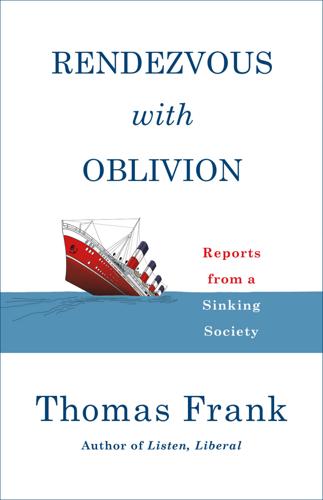
Rendezvous With Oblivion: Reports From a Sinking Society
by
Thomas Frank
Published 18 Jun 2018
That same day, the columnist Catherine Rampell insisted that the repeal of the Glass-Steagall bank regulatory act in the 1990s (an episode of which Sanders made much) “had nothing to do with the 2008 financial crisis,” and that those who pined for the old system of bank regulation were just revealing “the depths of their ignorance.”3 The next morning, the Post columnist Charles Lane piled on with an essay ridiculing Sanders’s idea that there was a “billionaire class” that supported conservative causes. Many billionaires, Lane pointed out, are actually pretty liberal on social issues. “Reviewing this history,” he harrumphed, “you could almost get the impression billionaires have done more to advance progressive causes than Bernie Sanders has.” On January 27, with the Iowa caucuses just days away, the Post columnist Dana Milbank nailed it with a headline: “Nominating Sanders Would Be Insane.”

The Finance Curse: How Global Finance Is Making Us All Poorer
by
Nicholas Shaxson
Published 10 Oct 2018
Your local car wash, your barber, your last surviving family fruit and veg merchant or your average worker can’t jump (or credibly threaten to jump) to Geneva if they don’t like their tax rates or fruit hygiene regulations. So the big players get the handouts, and the small fry are forced to pay the full price of civilisation – plus a surcharge to cover the roaming members of the billionaire classes who won’t pay. This ‘competition’ systematically shifts wealth upwards from poor to rich, distorting our economies and undermining our communities and democracies. The free-rider problem is ‘one of those things you hear about in your first term of economics, then never hear about it again’, says John Christensen, who co-founded the finance curse concept with me.
…
And the more wealth is concentrated at the top, the more of a pushover our countries will be. Inequality caused by wealth extraction is especially dangerous and divisive. That’s not just because the poor and middle classes feel increasingly left out, and have less and less to lose, but also because the billionaire classes need to distract us away from focusing on how they got rich. So they revert to the old political formula: using their control over the media to deflect popular fury in other directions, towards people with the wrong skin colour or the wrong sexual orientation, or from the wrong religious groups.

After the Gig: How the Sharing Economy Got Hijacked and How to Win It Back
by
Juliet Schor
,
William Attwood-Charles
and
Mehmet Cansoy
Published 15 Mar 2020
Between 1993 and 2017 the top 1 percent of households roughly doubled their incomes, taking home more than half of all the gains in income, compared to a mere 15.5 percent increase for the bottom 99 percent.45 The first decade of the sharing economy has conformed to these patterns, with fantastic wealth accumulation for founders, some of whom are now among the billionaire class. In early 2019, Uber founder Travis Kalanick was worth just under $6 billion, and the three cofounders of Airbnb were in the $3.7 to $3.8 billion range.46 The 1 percent theme did come up occasionally in our data, as earners talked about the customers. An insidious aspect of labor platforms is that they are essentially recreating a servant economy.
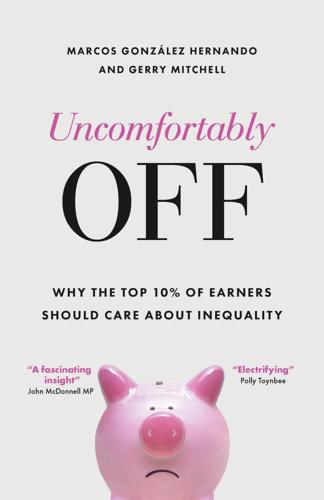
Uncomfortably Off: Why the Top 10% of Earners Should Care About Inequality
by
Marcos González Hernando
and
Gerry Mitchell
Published 23 May 2023
However, as Robert Reich has warned about the US: If the pandemic has revealed anything, it’s that America’s current social safety net and health care system does not protect the majority of Americans in a national emergency. We are the outlier among the world’s advanced nations in subjecting our citizens to perpetual insecurity. We are also the outlier in possessing a billionaire class that, in controlling much of our politics, has kept such proposals off the public agenda.47 In other words, vested interests in highly unequal countries, such as the UK and the US, have a fear of enlarging the nation’s sense of what is reasonable for the government to do for its citizens. And that is why, for example, the public have not been given any serious hopes about the government’s role in investing in the UK’s adaptation to climate change or to expect it to lead in a green industrial revolution in areas such as hydrogen, electric vehicles, decarbonising or renewable energies.
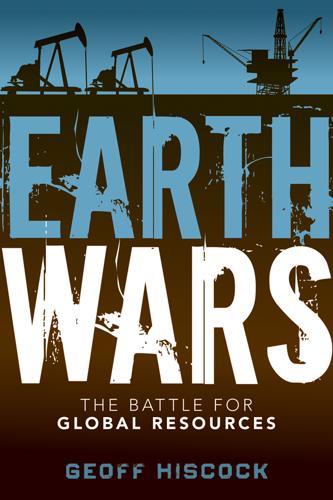
Earth Wars: The Battle for Global Resources
by
Geoff Hiscock
Published 23 Apr 2012
Shi Zhengrong, known as the Sun King; young business luminary Peng Xiaofeng of LDK Solar; Wu Jianlong of Zhejiang Sunflower; Zhu Gongshan of GCL Poly Energy; Jin Baofang of JA Solar; Gao Jifan, founder of early industry PV leader Trina Solar; Miao Liansheng of Yingli Green Energy; Lu Tingxiu, chairman of China Sunergy; Li Xianshou of solar wafer maker ReneSola; and Wang Chuanfu and Lu Xiangyang, co-founders of battery and electric car maker BYD Co. Since 2008, Warren Buffett’s MidAmerican Energy has held a 10 percent stake in BYD, which was set up by Wang and Lu in 1995. They both hold stakes in BYD that put them in the paper billionaire class. Like the wind sector, solar power—both thermal and PV—faces a shakeout in the years ahead as consolidation follows the first rush of enthusiasts and fortune-seekers. Globally, some of the big oil companies such as Exxon, Shell, Chevron, and BP have been major players in the solar industry since the 1980s.
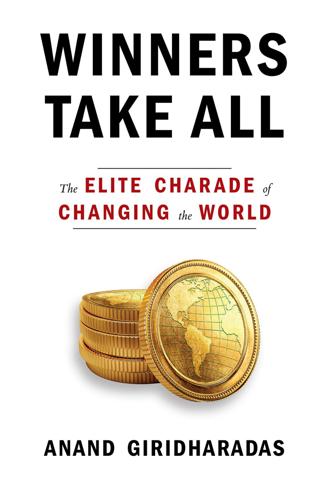
Winners Take All: The Elite Charade of Changing the World
by
Anand Giridharadas
Published 27 Aug 2018
This general approach to change jibed with what Clinton had stood for while in power: the championing of globalization, the embrace of markets, compassion, the declared end of labor/capital conflict, the promise of the rich and poor rising together—the insistence that loosened regulations good for Wall Street would also be good for Main Street; the marketing of trade deals craved by large corporations as being ideal for workers. The country was two months away from a referendum on Clintonism. Hillary Clinton had beaten Bernie Sanders, who spoke of putting the “billionaire class” in their place in order to make the working class thrive, whereas Clinton had spoken of wanting everyone to do better. Now she found herself up against the ultimate win-losey opponent, though this time of the race-baiting, authoritarian, ethno-nationalist sort. Donald Trump had harnessed an intuition that those people who believed you could crusade for justice and get super-rich and save lives and be very powerful and give a lot back, that you could have it all and then some, were phonies.

The Uninhabitable Earth: Life After Warming
by
David Wallace-Wells
Published 19 Feb 2019
It is how “philanthrocapitalism,” which seeks profits alongside human benefits, has replaced the loss-leader model of moral philanthropy among the very rich; how the winners of our increasingly winner-take-all tournament economy use philanthropy to buttress their own status; how “effective altruism,” which measures even not-for-profit charity by metrics of return borrowed from finance, has transformed the culture of giving well beyond the billionaire class; and how the “moral economy,” a rhetorical wedge that once expressed a radical critique of capitalism, became the calling card of do-gooder capitalists like Bill Gates. It is also, on the other end of the pecking order, how struggling citizens are asked to be entrepreneurs, indeed to demonstrate their value as citizens with the hard work of entrepreneurship, in an exhausting social system defined above all else by relentless competition.
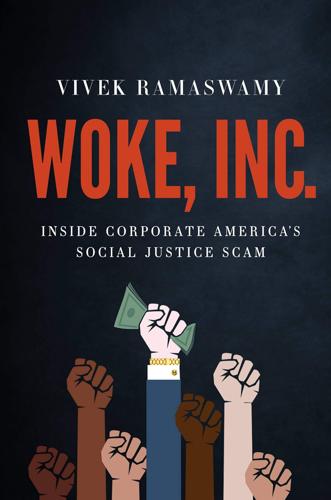
Woke, Inc: Inside Corporate America's Social Justice Scam
by
Vivek Ramaswamy
Published 16 Aug 2021
The occasion for the trip was the first-ever Future Investment Initiative global conference—one that was quickly dubbed “Davos in the Desert.” The conference shared a lot in common with the World Economic Forum in Davos and the annual Milken Institute Global Conference in Los Angeles. The same billionaire class was in attendance. They use the same private jets to travel to all three. They drank wine in Davos, whiskey in Los Angeles, and sparkling grape juice in Riyadh. In Davos they talk about the promise of ESG, in Los Angeles they talk about the American dream, in Riyadh they talk about spreading technology in the Middle East.i But in all three places, the goal was to set an agenda that entrepreneurs and CEOs were expected to follow—especially young CEOs like me who were dependent on investments from people like them.
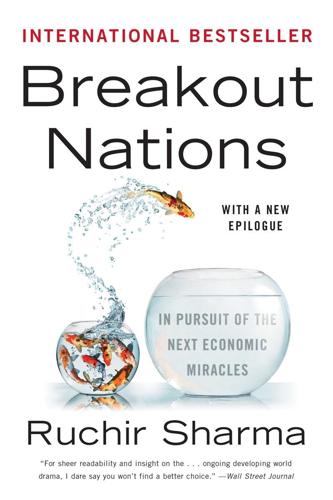
Breakout Nations: In Pursuit of the Next Economic Miracles
by
Ruchir Sharma
Published 8 Apr 2012
It’s a bit misleading to compare the billionaire elites of emerging economies to those of developed economies, because it is normal for a wealthy establishment to appear over time in a developed country. Still, even when compared to emerging nations, the United States is not generating a disproportionately powerful billionaire class. In the United States, where the average fortune of the top-ten richest is $31 billion, far larger than in any emerging nation, the overall billionaire share of GDP (10.6 percent) would be about average by emerging-market standards. America’s billionaires have also survived the financial crisis relatively unscathed.

Border and Rule: Global Migration, Capitalism, and the Rise of Racist Nationalism
by
Harsha Walia
Published 9 Feb 2021
Millions of migrant and undocumented workers across the country endure impoverishment and lethal work conditions in overcrowded and unsanitary farms, meatpacking plants, and grocery stores. Without valid social security numbers, many are ineligible for federal relief stimulus checks or adequate health insurance,25 trapped in the American dream of choosing to sell one’s labor for a wage under deadly conditions or death by unemployment and destitution. Meanwhile, the US billionaire class has experienced a wealth surge of $434 billion during the coronavirus pandemic.26 The horrific exploitation of migrant and undocumented workers and the cruel expulsion of migrants and refugees is justified through dehumanizing far-right rhetoric scapegoating racialized bodies as “infectious” and “diseased.”

Chokepoint Capitalism
by
Rebecca Giblin
and
Cory Doctorow
Published 26 Sep 2022
The current system is self-reinforcing: concentrated industries generate big profits for their investors, who, seeing how well their anticompetitive flywheels work, go looking for other industries to which they can apply the same extractive tactics. Its primary beneficiaries are an infinitesimal coterie of the ultra-rich, who spend increasing amounts of time segregated from the rest of society in their gate-guarded mansions. The philosophy that underpins the billionaire class (and the Chicago School generally) is a sort of right-wing Marxism. “They buy the Marxian proposition that the state is an executive committee for rigging the economy in the interest of the ruling class,” says Harvard professor Joseph Kalt. “But they think that that is a good thing as long as the ruling class is based on wealth, however previously acquired.
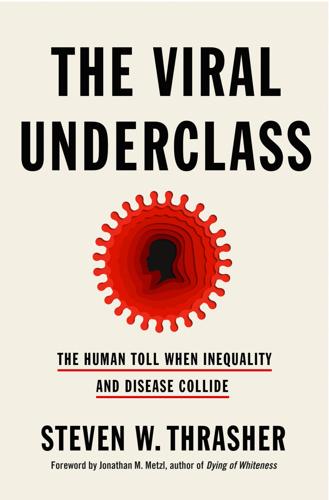
The Viral Underclass: The Human Toll When Inequality and Disease Collide
by
Steven W. Thrasher
Published 1 Aug 2022
This is why this virus has unnerved the ruling class around the world more than others; as the casually transmitted SARS-CoV-2 dropped a match into decades of social kindling, those rulers became aware that the blast might reach even them. U.S. society could share the risks of health with universal health care. The risks of the novel coronavirus of 2019 could have been shared with robust state support for protection, housing, and food security. The billionaire class could have shared the wealth their employees earned, instead of making themselves richer and their workers poorer throughout 2020. But because the state (at the behest of the wealthy who control it) did not want to share this risk, the onus was put on every individual to figure out COVID-19 largely on their own.
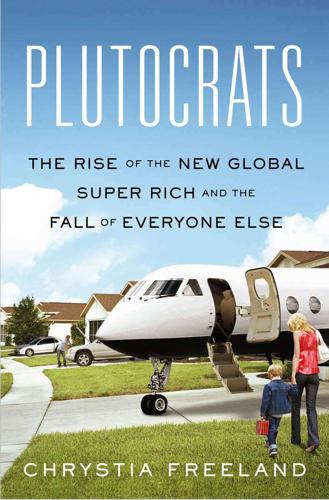
Plutocrats: The Rise of the New Global Super-Rich and the Fall of Everyone Else
by
Chrystia Freeland
Published 11 Oct 2012
In a study of concert ticket prices, economist Alan Krueger found that in the two decades between 1982 and 2003, a time when first music videos, especially as celebrated on MTV, and then digital sharing technology, as pioneered by Napster, extended the reach of top performers, the share of concert revenue taken by the top 5 percent of entertainers increased by more than 20 percent, from 62 percent to 84 percent. The top 1 percent did even better: their share more than doubled, from 26 percent in 1981 to 56 percent in 2003. (By contrast, the top 1 percent in the United States overall earned 14.6 percent of the income in 1998.) More intimate deals with the billionaire class are a smaller, but significant, source of income for superstar performers. Arkady, a Russian businessman in his thirties, reportedly paid Lady Gaga $1 million to appear in her “Alejandro” music video. And even stars a little past their prime can earn fat fees for personal appearances for the plutocrats.

Dopesick: Dealers, Doctors and the Drug Company That Addicted America
by
Beth Macy
Published 4 Mar 2019
Voters should judge politicians at all levels on the literal health of their communities, lawyer Bryan Stevenson explained. And while most Americans support federal financing of health care and even a slim majority approves of single-payer, those reforms will likely remain political nonstarters until more voters begin defining themselves in contrast to the billionaire class holding sway in Washington. Also needed are more efforts to court nonwhite voters, including Hispanics (of whom 74 percent are currently registered to vote), African Americans (69 percent), and Asian Americans (57 percent). “You’ve got too many leaders just not responding to problems,” Stevenson said.
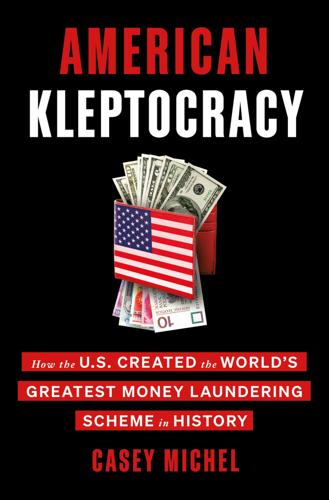
American Kleptocracy: How the U.S. Created the World's Greatest Money Laundering Scheme in History
by
Casey Michel
Published 23 Nov 2021
And everyone—both domestically and internationally—knew it. No matter how much money Teodorin threw around, no matter how much he was worth, his money would always be tainted. Which points directly to the final reason for Teodorin’s insecurity. With his dark skin and charcoal eyes, Teodorin, born in 1968, came of age when the only members of the billionaire class were Europeans or North Americans—when wealth was, in essence, white. Sure, there were members of the monied class who were non-white. But they tended to be either fellow tyrants, like Haitian dictator Jean-Claude “Baby Doc” Duvalier (estimated to be worth nearly $1 billion), or neighboring megalomaniacs, such as the Democratic Republic of Congo’s Mobutu Sese Seko (worth upward of $5 billion, and whose name translates to “the all-powerful warrior who, because of his endurance and inflexible will to win, goes from conquest to conquest, leaving fire in his wake”).4 There was one figure, though, who by the mid-1980s proved that the world of stratospheric wealth wasn’t reserved only for the lily-white: Michael Jackson.

Limitless: The Federal Reserve Takes on a New Age of Crisis
by
Jeanna Smialek
Published 27 Feb 2023
Each August, the leading economic minds descended on Jackson Lake Lodge, where they took in sweeping views of the Teton Mountains and debated full employment over barbecue dinners and Huckleberry Old Fashioneds. (It is an interesting aside that besides offering a striking panorama of the Mountain West, Jackson was home to the widest wealth gap in America thanks to its sizable billionaire class.) In 2020, the pandemic would fundamentally change the annual gathering. Because economists could not gather for the conference, the Kansas City branch had decided to stream it live online, opening it to the public for the first time. Whether the symbolism was intentional or not, Powell had chosen to unveil his central bank’s plan for its future at a symposium that had long epitomized central banking’s elitism and secrecy at the very moment that its exclusionary walls broke down.

Doppelganger: A Trip Into the Mirror World
by
Naomi Klein
Published 11 Sep 2023
Cast as distinct from the rest of supposedly healthy and decent capitalism, Jewish capitalism was a mythic structure, a bogeyman, with a familiar purpose: “Big business,” Leon wrote, “endeavored to divert and control the anti-capitalist hatred of the masses for its own exclusive profit.” Very much as the internationally networked Bannonite right rages at “globalists” to divert popular rage away from capitalism as a system and toward an imaginary cabal that can be cut out, leaving the structures that created and protect the global billionaire class intact. Leon also explained how the Nazi Party, having witnessed the successful workers’ revolution in Russia, and seeing communism gaining political power in Germany, set out to deliberately weaken the importance of class in the minds of German workers. This was done by replacing class solidarity with racial solidarity, supplanting the common interests shared by all workers with the pleasures and rewards that flowed from belonging to the Aryan race, a bond that claimed to unite the poorest Christian workers with the wealthiest industrialists.

The Price of Time: The Real Story of Interest
by
Edward Chancellor
Published 15 Aug 2022
The OTX Classic Car Index – which tracked a basket of blue-chip vintage cars – quadrupled between 2005 and 2018, handily outperforming the world’s stock markets. A German bank recommended that clients add vintage car exposure as ‘an attractive addition to their portfolio in terms of yield and value stability’.63 The rising fortunes of the billionaire class were not just an American phenomenon. Between 1987 and 2013 the number of dollar billionaires around the world increased tenfold and their share of global wealth nearly quadrupled. By 2015, it was estimated that 62 people laid claim to half the world’s total wealth (down from 388 in 2010).64 Since a large chunk of private wealth was stashed in offshore tax havens, reported figures understated the true extent of wealth inequality.65 Wealth wasn’t so much trickling down, said the aid charity Oxfam, as being ‘sucked upwards’.66 THE 99 PER CENT It is questionable whether inequality caused the financial crisis, but there’s no doubt that the costs of the crisis were unevenly distributed.

Capitalism and Its Critics: A History: From the Industrial Revolution to AI
by
John Cassidy
Published 12 May 2025
The original idea for it came to me in 2016, during the insurgent presidential campaign of Senator Bernie Sanders, and I made the final edits to the text shortly after Donald Trump was elected to a second term. Sanders, you may recall, claimed that the US economy was “rigged” and promised to make it work for “working families and not just for the billionaire class.”1 Trump was a billionaire himself, of course, but that didn’t prevent him from positioning himself as the tribune of a forgotten working class and parlaying the grievances and discontents of many non-rich Americans all the way to the White House, twice. The rising disaffection with American capitalism that Sanders (and, indeed, Trump) drew upon in 2016 proved to be a lasting phenomenon.